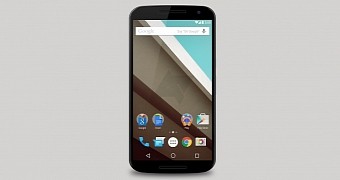Last month, at MWC 2015 in Barcelona, Google’s Senior Vice President Sundar Pichai confirmed for us that the company had plans of becoming a “mobile virtual network operator.” He also said that the official announcement would be made in a few months.
It appears things have been going smoothly for Google in this direction, and if we’re to believe a report coming out of the Wall Street Journal, the search giant is ready to introduce its wireless service in the United States today (April 22). At the beginning, the service will only be available for owners of the Motorola Nexus 6, as it was previously rumored.
As we told you before, Google’s service will utilize the infrastructure of carriers like Sprint and T-Mobile, just like other mobile virtual network operators. The biggest positive aspect as far as this setup is concerned is that users can alternate between the two networks depending on signal strength.
Details about how Google plans to do business as a wireless carrier have leaked before, although the info is yet to be confirmed.
We're expecting Google to make an official announcement in a few hours
For starters, it has been discovered that Google will let users choose how much data they want/need per month. In case you end up not utilizing all the data, the search giant will refund you.
If the opposite scenario happens and you surpass the set allowance, the price per gigabyte for overages is the same as if you just signed up for a plan with more data from the get-go.
Google is also said to be making phoning and texting in the US free of charge, and international calls will also be billed under low-rates. More than that, users will be offered provisions for international roaming.
Google’s initial wireless carrier plans might be small and applicable only to the Nexus 6, but the initiative will help the company experiment with novel smartphone services.
At MWC 2015, Pichai made a parallel with the company’s Nexus lineup, which employs outside help from third-party manufacturers like HTC, Motorola, Samsung or LG.
The phones give Google a chance to gain experience hardware-wise and devise new strategies related to services.
A new era might be opening up for Google.

 14 DAY TRIAL //
14 DAY TRIAL //